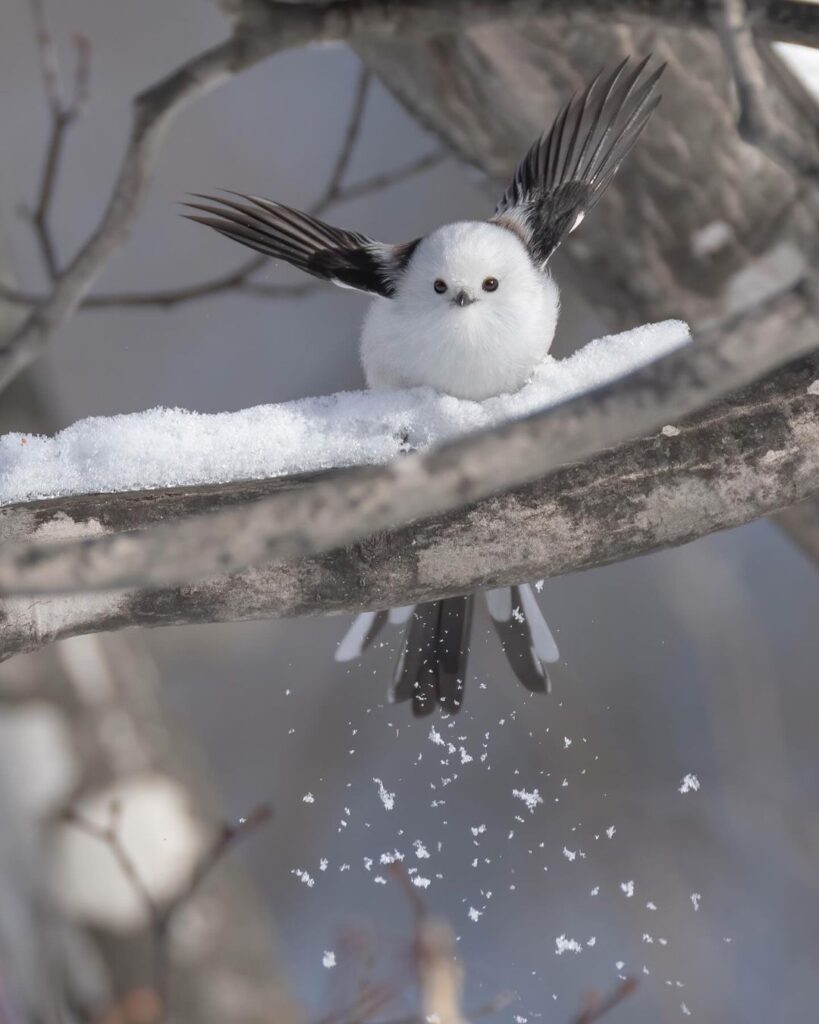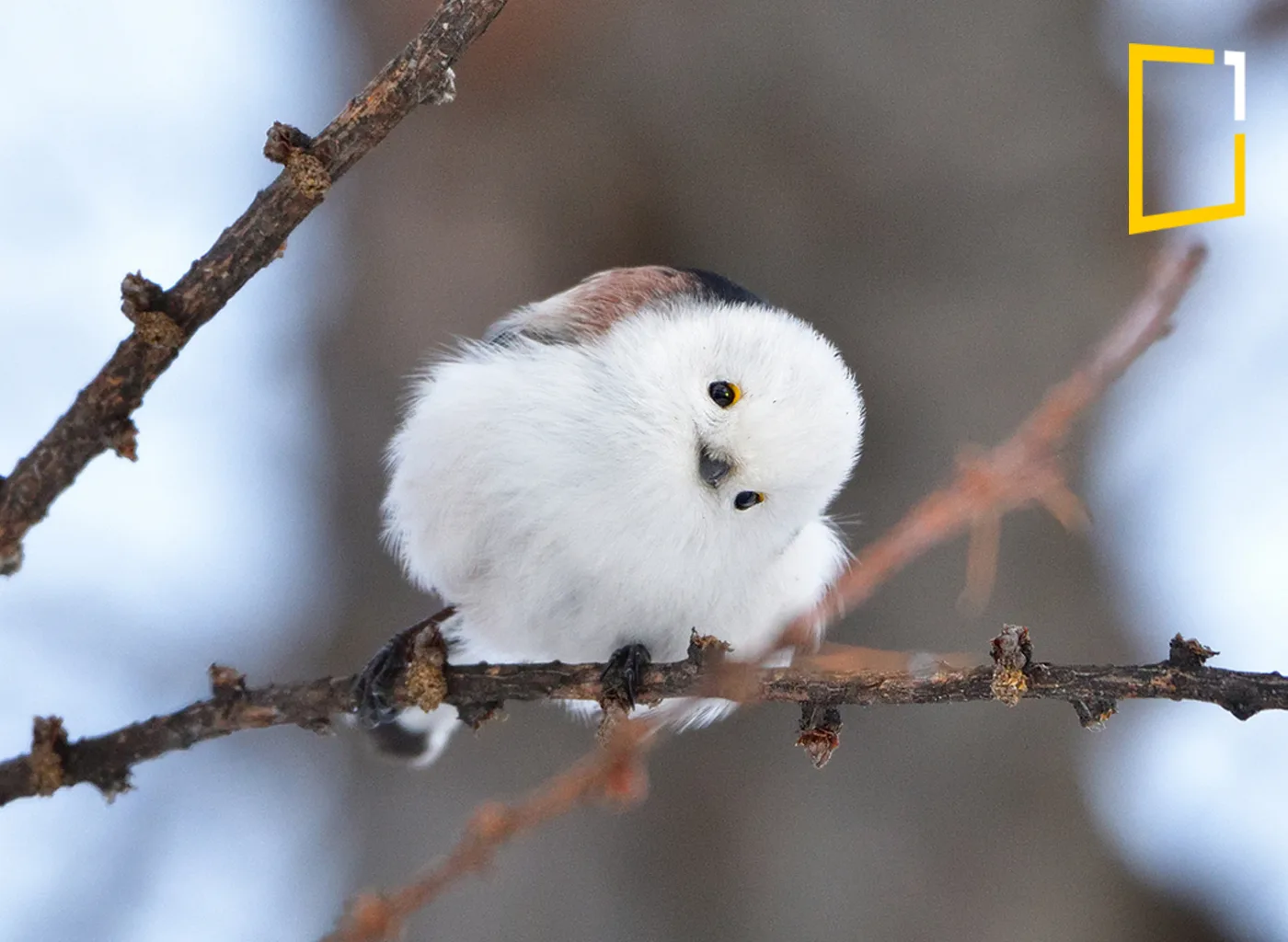The Shima Enaga, often hailed as the “cutest bird in the world,” is a delightful and tiny species of bird native to Hokkaido, Japan. Belonging to the Long-tailed Tit family (Aegithalidae), this fluffy, snowball-like bird has won the hearts of bird enthusiasts worldwide. With its round body, bright eyes, and unique white face, the Shima Enaga stands out for both its appearance and charming behaviors.
What Makes the Shima Enaga Unique?
The Shima Enaga is a distinct subspecies of the Long-tailed Tit, but what sets it apart is its all-white face, unlike its cousins in mainland Japan, which sport black eyebrows. This absence of facial markings, along with its small size and puffy plumage, makes it look like a cute little ball of cotton. Adult Shima Enagas are approximately 13 to 15 centimeters long, with nearly half of their length made up by their long, graceful tail.


Carry a Snow Fairy Everywhere! ❄️
Protect your phone with the kawaii-inspired Shima Enaga case, featuring Japan’s adorable “snow fairy.” 🕊️ Perfect for bird lovers and fans of cute designs, this case brings the soft, fluffy charm of Hokkaido’s winter to your daily life.
📱 Cute, Magical, and Protective!
🛒 Grab yours now!
👉 https://etsy.me/4nDwzlf
👉 https://etsy.me/4dSYHga
Habitat of the Shima Enaga
Shima Enagas are native to the northernmost island of Japan, Hokkaido. These birds thrive in the island’s temperate forests, where they forage in groups for food. During the harsh winters, they can be found flitting through snow-covered trees in search of insects, spiders, and larvae—anything they can find to sustain themselves through the cold season.
Adaptation to the Cold
Unlike many birds that migrate to warmer climates, the Shima Enaga stays in Hokkaido throughout the year. Their dense, fluffy feathers serve as excellent insulation against freezing temperatures. The birds’ ability to survive and even thrive in cold weather is one of their most remarkable traits. They often huddle together at night in tree crevices to conserve warmth.
Diet and Feeding Behavior
Shima Enagas are primarily insectivores. They feed on small insects, spiders, and larvae, often foraging high up in the canopy of trees. During the winter, when food is scarce, they adapt by consuming seeds and small berries. These birds are extremely agile, hopping between branches and hanging upside down to reach their meals.
Social Birds
Shima Enagas are highly social birds. They live and travel in flocks, often consisting of up to 20 individuals. This group dynamic helps them find food and stay safe from predators. They communicate with each other through a series of high-pitched calls, ensuring the flock stays connected, especially in dense forests.

Breeding and Nesting
The Shima Enaga’s breeding season occurs in early spring. These birds are known for their meticulous nest-building skills. They construct dome-shaped nests made of moss, feathers, and spider silk, often hidden in dense branches. Both male and female birds take part in the construction, and once complete, the nest provides warmth and protection for their eggs.
Parenting and Fledglings
After laying 6 to 10 eggs, both parents share the responsibility of incubation. Once the chicks hatch, they are cared for by both parents and even other members of the flock, a behavior known as cooperative breeding. This social structure ensures that the young have a higher chance of survival in their challenging environment.
Cultural Significance of the Shima Enaga
In Japan, the Shima Enaga holds a special place in the hearts of many. Its adorable appearance has made it a popular figure in Japanese art, merchandise, and even social media. Many people associate the bird with purity, tranquility, and the natural beauty of Hokkaido’s landscapes.
Conservation Status
While the Shima Enaga is not currently listed as an endangered species, its habitat in Hokkaido faces threats from deforestation and urban development. Conservation efforts are important to ensure that this beloved bird continues to thrive in its natural environment.
How to Spot a Shima Enaga
For birdwatchers visiting Hokkaido, spotting a Shima Enaga is a must. These birds are most active during the early morning and late afternoon. Watching them dart between snow-covered trees is a truly magical experience, especially in the winter when their white plumage blends beautifully with the snowy backdrop.
Best Times for Birdwatching
The best time to observe Shima Enagas is during the winter months when they are easier to spot against the white snow. They tend to frequent forests and parks, especially those with ample tree cover. Birdwatchers should keep an eye out for their long tails and listen for their distinctive, high-pitched calls.
Conclusion
The Shima Enaga is more than just a cute bird; it is a symbol of resilience and beauty in the wilds of Hokkaido. Whether you’re a birdwatcher or simply someone who loves nature, encountering the Shima Enaga is sure to leave a lasting impression. As we continue to protect and preserve the natural habitats of such unique creatures, we ensure that the charm of the Shima Enaga remains a part of our world for generations to come.
—————————————————————
Thanks for joining this wild ride. Stay curious, stay tuned, and let’s make our world brighter!
Subscribe to our channel and stay tuned for more intriguing mysteries and scientific wonders. Together, let’s uncover the secrets of the Earth and expand our understanding of this fascinating world.
Check out the latest blog and video on YouTube and learn something new today.
Attention, all readers! To deepen your understanding and stay informed on the latest news and trends, be sure to click on the link to access more informative articles.
Join the family by liking us on Facebook, or follow us on Twitter and Instagram.
If you liked this story, sign up for the weekly OneMinuteExplore features newsletter called “The Essential List”. A handpicked selection of stories from OneMinute Nature, Wildlife, Culture, Travel, Stories, and more… delivered to your inbox every Weekend.
👉 We may earn a commission from purchases made through links in this content, but it won’t affect your price. Rest assured, our recommendations are based on thorough research and genuine belief in the products. Your support through these links helps us continue providing valuable content. Thank you for your support!













